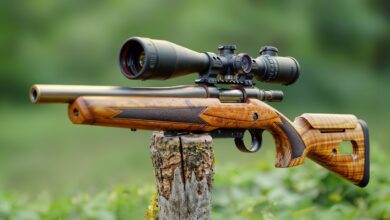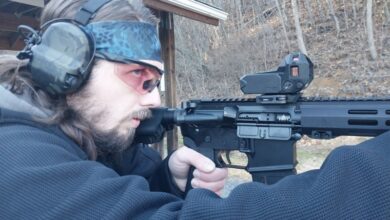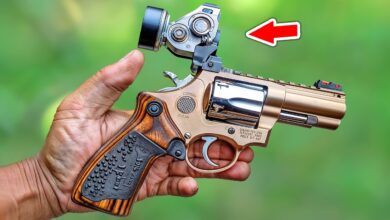Parallax: What It Is, Why It Matters, and How To Beat It
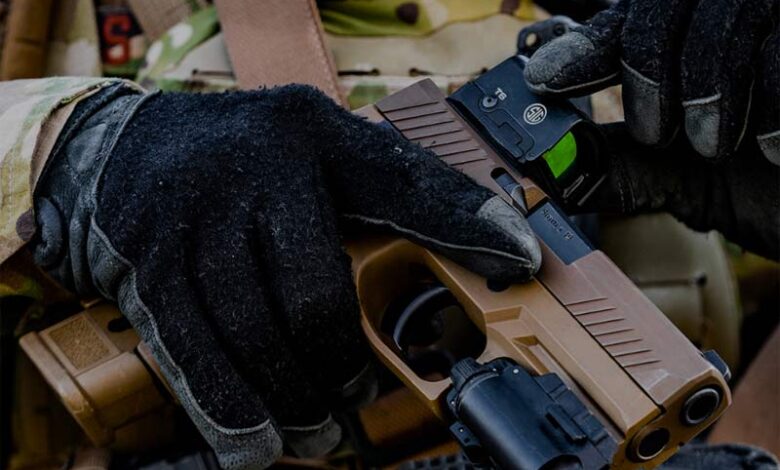
Parallax is relatively simple to explain but somewhat difficult to wrap your head around. It’s present in all optics, and as a shooter, you’re bound to run into it eventually. Parallax should matter to you unless you spend all your time with iron sights. Simply put, parallax is an inconsistency that occurs when you are looking through your optic at a target. The definition states that parallax is “the apparent displacement of an object when viewed from two different points that are not in line with the object.”
With optics, it’s how the reticle is perceived to move when placed on a target when the shooter moves their head. This optical effect is caused by the reticle and the image of the target not being on the same optical plane.
A Little Experiment
Before we get too deep into the subject, let’s give you a quick and simple example. Raise a finger in front of your face. Align that finger with something in front of you, let’s say a light switch. Now, close your left eye, open your left, and close your right. It appears that your finger moved, but you know it didn’t. Bam, that’s parallax. While a lot of shooters will always associate it with a scope, it is everywhere and can be observed in several different ways.
Grabbing the Gun
With that in mind, we can easily observe it with a rifle scope. I want you to get a weapon with an optic, any optic, and any weapon. Set up a target and position yourself somewhere within five to twenty yards. A nice place to rest your weapon helps. Assume a firing position behind the gun, obtain a cheek weld, and look at your target.
Now, without moving your weapon, I want you to move your head. If the reticle seemed to have moved, but the gun remained still, you just experienced parallax. Once you reassume your proper cheek weld, the reticle will likely move back to where you want it. If you happened to have fired the weapon when you moved your head, the bullet would have struck where you were aiming when you assumed a proper cheek weld. (Assuming your optic is zeroed.) That doesn’t seem like a big deal, but the opposite is also true.
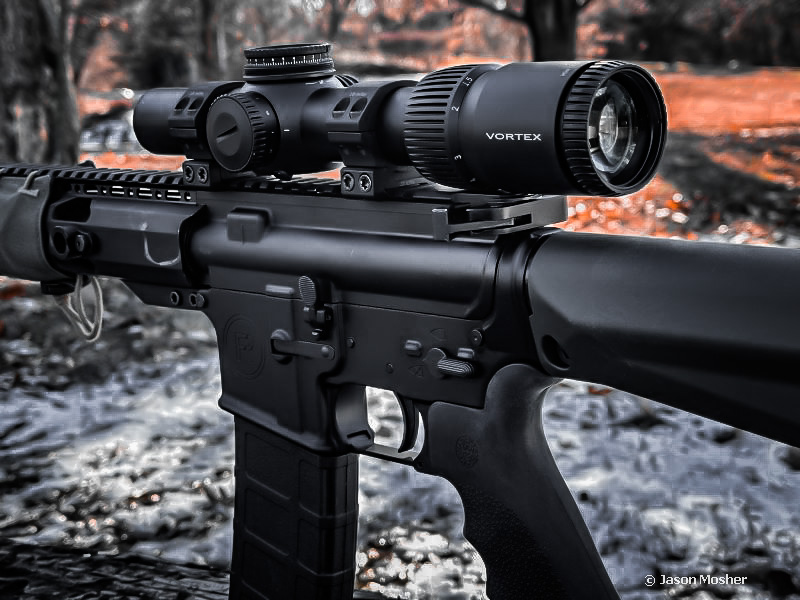
Let’s say you got on target, aligned your sights, and were perfectly centered behind the sight when you fired. Your round may have struck right, left, high, or low, even though the reticle was on target. Parallax can create accuracy issues. At close ranges, they are relatively minor, but as the range extends, the problem will only get worse. If you’re up close, half an inch isn’t much, but at 300 yards, that half an inch of error might turn into 3 inches of error; then we are talking about the difference between a hit and a miss.
How do we solve the problem? The answer is complicated because of the wide variety of optics available.
Adjustable Parallax: The Easy Answer
If you are looking at a dedicated long-range optic or even a medium-range optic, you likely have an adjustable parallax option. Adjustable parallax often looks like a third adjustment turret on your rifle. It’s often on the left side of the rifle and adjusts anywhere from 100 to 500 yards. This knob exists to bring your reticle and the image of the target into the same plane. I feel the need to mention that those numbers on the knob are not a hard and fast science.
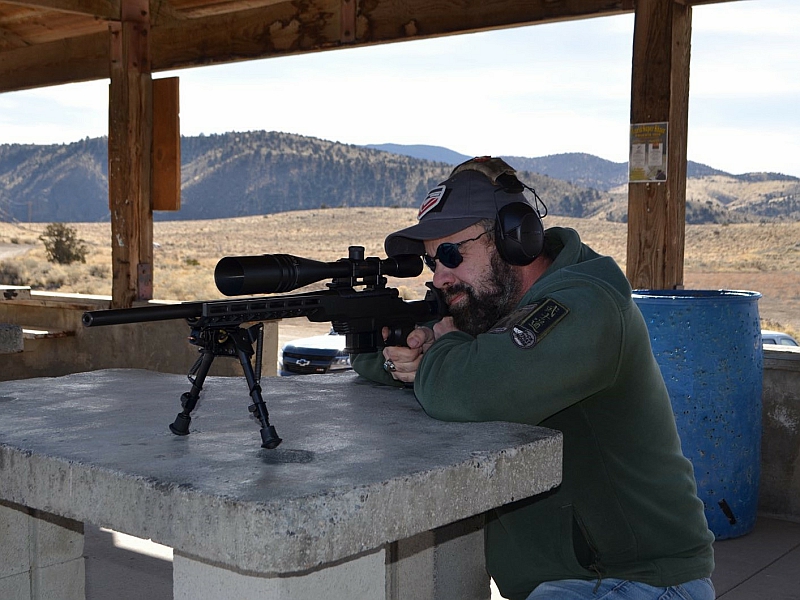
You can ignore them in most cases. They tend to be suggestions more than true measurements. There are certainly optics where the range is accurate, but I’ve found those optics to be rare. Line it up, snap into your target, and begin to move your head up and down or from left to right.
Observe any issues with parallax and begin adjusting the knob down. After each adjustment, move your head to see if the reticle moves. The goal is that the reticle and target stay together regardless of how you move your head. Once the reticle seems to stop floating, the parallax has successfully been adjusted.
Fixed Parallax Optics
A lot of optics don’t give you an option to adjust for parallax. Red dots, for one, don’t have a knob to adjust, and neither do prism sights or LPVOs. In this situation, you have a fixed parallax or a parallax-free optic.
LPVOs and Prism optics have fixed parallax, which means the optic is parallax-free at a certain range. These magnified optics most commonly feature a fixed parallax at 100 yards. They use 100 yards because it’s a good in-between for close-range shooting and longer-range engagements. Anything less than 100 yards will be subject to parallax, although, at super close ranges, you aren’t likely to notice the error very much. This is why the “L” in LPVO is important. As we lose parallax adjustment, the continually higher levels of magnification have diminishing returns.
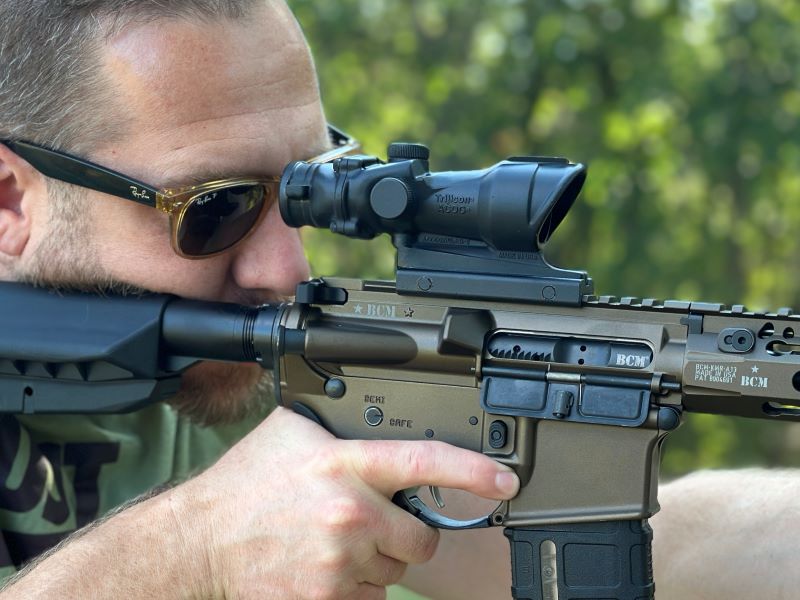
Red dots will often declare themselves parallax-free, but that’s not really true. All optics are subject to parallax. It’s just that red dots tend to be less affected by it. Parallax-free is an industry phrase that means it’s parallax-free beyond 33 or 50 yards, depending on the manufacturer. If you’re closer to your target, it’s going to be tough to notice because you’re so close to the target that the very small misalignment won’t be a major factor in accuracy.
Beating Parallax
In fixed parallax optics, you still want to beat parallax if you can. Who doesn’t want to shoot as straight as they can? Just because it can affect you doesn’t mean it always has to. If you get a good cheek weld and ensure you are perfectly centered on the target, then the reticle and image of the target will be on the same optical plane. If you are properly centered with a good cheek weld behind the gun, then errors caused by parallax can be minimized or even eliminated.
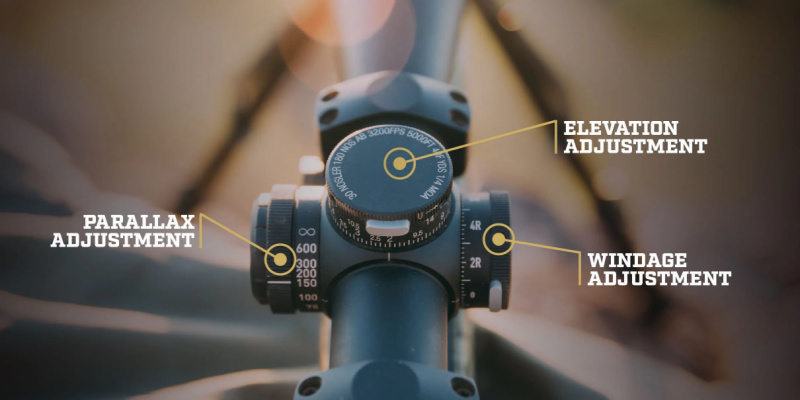
Funny enough, there aren’t a ton of parallax complaints about optics, like the ACOG, because of their tight eye relief. Which often forces you to get a good, solid position behind the optic and on the gun. If you don’t, you have so much scope shadow you can’t see anything anyway. Longer eye relief and generous eye boxes aren’t a problem necessarily, but they can certainly make it easier to get on the gun, which is great for close-range shooting. However, it makes it easier for shooters to assume a poorer cheek weld and have to deal with parallax issues.
Getting Parallel
Parallax becomes a problem when shooting at longer ranges and smaller targets. For most shooters, it’s not a major issue, but I do feel it’s important to recognize and learn about it. It’s one more tool in what should be an overflowing toolbox of knowledge.
The post Parallax: What It Is, Why It Matters, and How To Beat It appeared first on The Mag Life.
Read the full article here


